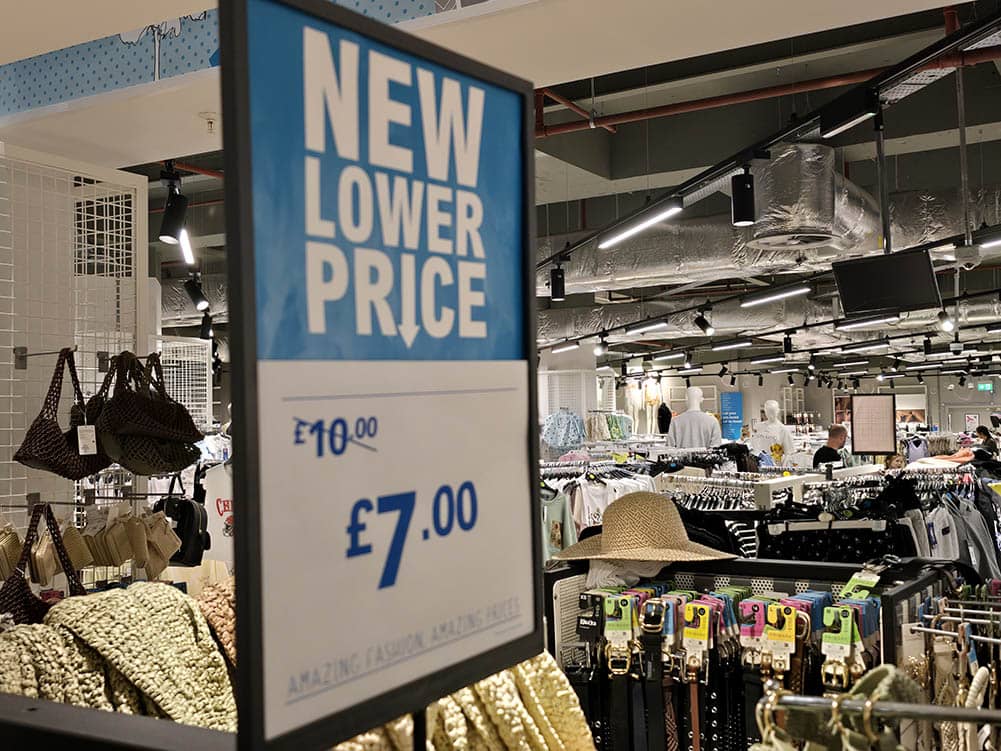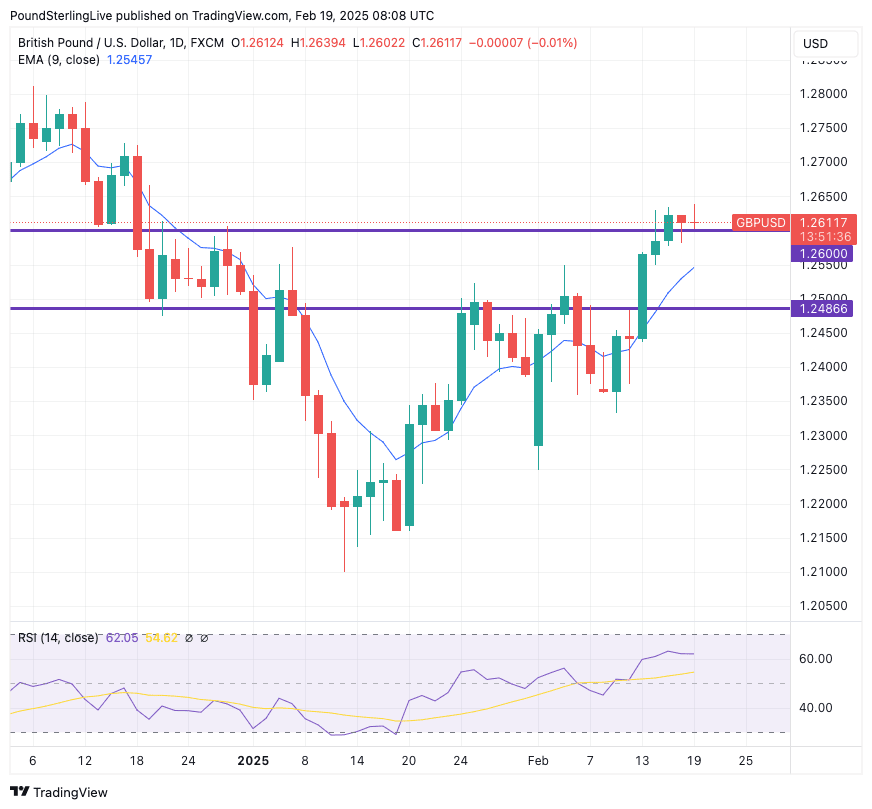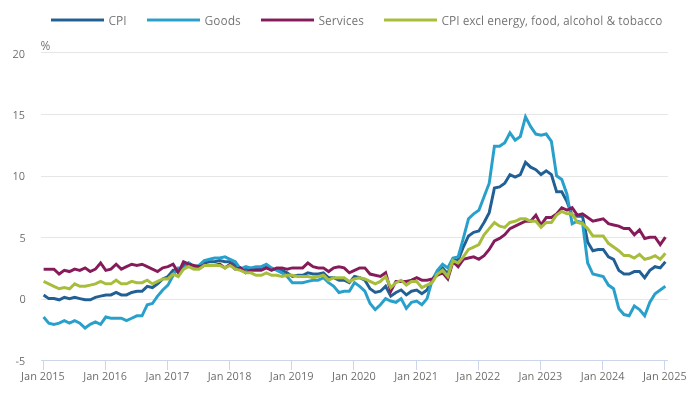
Image © Pound Sterling Live
The British Pound defends its 2025 recovery rally against the Dollar after new inflation data provided a boost.
The Pound-to-Dollar exchange rate (GBPUSD) held above the key 1.26 support level after the UK reported inflation unexpectedly rose from 2.5% in December to 3.0% year-on-year in January, breezing past consensus estimates for a rise to 2.8%.
This means dollar buyers are seeing the best exchange rate available to them since December 19.
Sterling's advance comes amidst a rise in services sector inflation to 5.0% in January from 4.4%, raising concerns that the pick up in inflation is broad-based and will require a more restrictive stance from the Bank of England.
The Bank is mandated to target inflation at 2.0%, and all signs now point to an increase in price pressures. The textbook response would be to tighten policy by keeping rates unchanged or even raising them.
However, the Bank is forecasting a rise in inflation to as high as 3.7% this year but thinks the spike will be temporary and has indicated it will continue to cut interest rates.
"CPI was on the hot side for January. But driven by goods (95th percentile for Jan), whilst services was soft (45th percentile). Worryingly, inflation breadth was high for January (50% of basket running at >2.5% inflation). Doesn't support faster BoE cuts," says Viraj Patel, a startegist at Vanda Research.
Above: GBPUSD at daily intervals, showing the best levels for dollar buyers since December.
That being said, February's inflation release looks hotter than the Bank might have expected, hinting that it will have little option but to pause the cutting cycle later in the year. Inflationary pressures are due to rise in the spring as the government imposes significant new taxes on businesses, which will likely see them raise prices.
"In April, the private sector must determine its response to significantly higher employment costs, and this may well push up consumer prices," says Dr. Roger Barker, Director of Policy at the Institute of Directors.
Money markets will price in fewer rate cuts, which will underpin UK bond yields and mechanically boost the value of the Pound.
Above: UK services inflation remains sticky and is too high. Unless it falls, the headline rate of inflation won't achieve 2.0% on a sustained basis.
The Pound-Dollar exchange rate rose to a high of 1.2639 in midweek trade, bringing the strongest level for dollar buyers since December 19. Although a hotter than expected inflation print in the UK is offering some upside, the bulk of the advance is due to a weakening in the Dollar.
"The greenback remains on the back foot as the dollar 'Trump trade' has gone into reverse," says Jonas Goltermann, Deputy Chief Markets Economist at Capital Economics.
"Between news on President Trump’s tariffs plans, his steps towards an apparent rapprochement with Russia, and some softer US economic data towards the end of the week, the dollar has dropped to its lowest level in two months," he adds.
Capital Economics nevertheless sees limits to USD weakness, which can contain GBPUSD upside.
It maintains a forecast that the Dollar will end the year higher, "because we still think US tariffs will end up rising significantly, while US economic and equity market outperformance will resume," says Goltermann.


